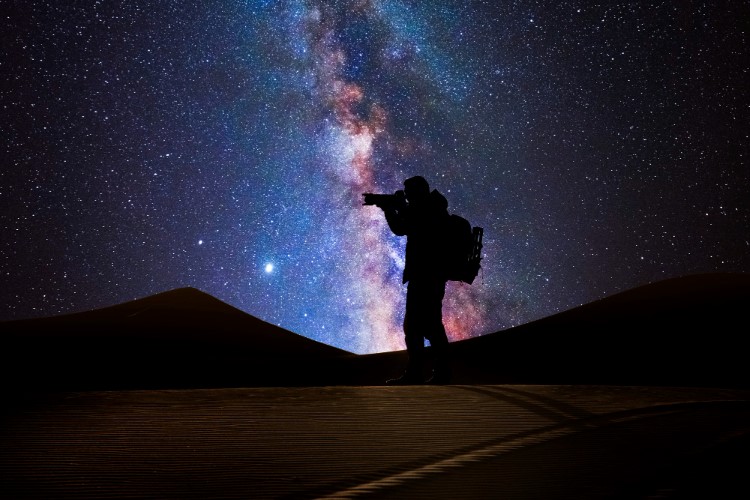Table of Contents
Have you ever looked up at the night sky and felt a sense of wonder? In our brightly lit cities, the true spectacle of the cosmos is often hidden. Astro tourism, a unique and rapidly growing travel trend, invites you to journey to the world’s darkest corners to witness the breathtaking beauty of the stars, planets, and galaxies.
This guide will explore what is astro tourism and why it’s captivating travelers worldwide. We will uncover the best destinations for stargazing, the benefits of this unique travel style, and how you can plan your own cosmic adventure. Prepare to discover a new way to connect with the universe.
What is Astro Tourism?
Astro tourism, or tourism astronomy, is the practice of traveling to destinations specifically for stargazing and other astronomical experiences. It involves seeking out locations with minimal light pollution to get a clear, unobstructed view of the night sky. This form of travel has deep roots in human history, as ancient civilizations also journeyed to observe celestial events.
The recent surge in popularity is driven by a renewed fascination with space, fueled by incredible discoveries and the rise of commercial space exploration. As more people seek authentic and meaningful travel experiences, the allure of connecting with the vastness of the universe is stronger than ever. It offers a profound escape from our busy, screen-filled lives.
Key Attractions of Astro Tourism
The appeal of tourism astronomy lies in its diverse and awe-inspiring attractions. It’s more than just looking up; it’s about experiencing celestial phenomena in a truly immersive way.
Unforgettable Stargazing Locations
The core of astro tourism is visiting places where the Milky Way stretches across the sky like a celestial river. These locations often include remote national parks, vast deserts, and high-altitude mountains far from city lights. Observatories with powerful telescopes open to the public also offer incredible opportunities to see distant galaxies and nebulae up close.
Witnessing Major Astronomy Events
Astro tourists often plan their trips around spectacular celestial events. This could mean traveling to witness a total solar eclipse, a dazzling meteor shower like the Perseids, or the rare appearance of a comet. These events create a sense of shared wonder and are a powerful draw for travelers.
Specialized Tours and Experiences
A growing industry of specialized tour operators offers guided astro tours. These experiences can range from overnight camping trips under the stars with expert astronomers to workshops on astrophotography. These tours provide the equipment and knowledge needed to make the most of the night sky.

Best Destinations for Astro Tourism
Across the globe, certain places have become legendary for their pristine night skies. These destinations are a must-visit for any aspiring astro tourist.
Premier Global Destinations
Some of the world’s most renowned spots for stargazing include the Atacama Desert in Chile, known for its high altitude and dry air. Mauna Kea in Hawaii is home to some of the world’s most powerful observatories. In the Southern Hemisphere, Aoraki Mackenzie International Dark Sky Reserve in New Zealand offers breathtaking views of the Southern Cross and Magellanic Clouds.
Dark Sky Reserves
The International Dark-Sky Association officially designates locations as Dark Sky Parks, Reserves, and Sanctuaries to protect them from light pollution. There are now over 200 certified locations worldwide. Visiting one of these protected areas guarantees an exceptional stargazing experience and supports conservation efforts.
The Benefits of Astro Tourism
This unique form of travel offers more than just pretty views; it provides deep personal and educational rewards.
A Powerful Educational Experience
Astro tourism is a fantastic way to learn about space, physics, and our place in the universe. Many tours and observatories offer educational programs that make complex astronomical concepts accessible and exciting for all ages. It turns the cosmos into a living classroom.
A Deep Connection to Nature
Spending a night under a star-filled sky in a remote location is a deeply peaceful and reflective experience. It fosters a connection to the natural world that is often lost in urban environments. This sense of awe and wonder can be both humbling and inspiring.
How to Get Involved in Astro Tourism
Planning your first cosmic adventure is easier than you might think. Here’s how you can get started.
Booking Tours and Packages
Numerous travel companies now specialize in astro tourism, offering packages that include accommodation, transportation, and expert guides. You can book everything from a private observatory visit to a multi-day stargazing expedition.
Equipment and Preparation
While you don’t need expensive gear to enjoy the night sky, a good pair of binoculars can dramatically enhance your view of the moon and planets. For those interested in astrophotography, a DSLR camera with a tripod is a must. Most importantly, bring warm clothing, as even desert locations can get cold at night.
Environmental Considerations
Astro tourism plays a crucial role in the fight against light pollution, a growing environmental concern.
Preserving Our Dark Skies
Light pollution not only obscures our view of the stars but also disrupts ecosystems and can negatively impact human health. By supporting astro tourism, you are helping to raise awareness and promote initiatives that protect our natural night skies for future generations. Responsible tourism practices are essential to minimizing environmental impact in these pristine locations.
The Future of Astro Tourism
The future of looking up is incredibly bright. As technology advances and more people seek out unique experiences, the field is set to expand. We can expect to see more tech-enhanced stargazing through augmented reality apps and a continued growth in designated dark sky communities around the world.
Conclusion
Astro tourism offers a unique opportunity to disconnect from the everyday and reconnect with the cosmos. It’s a journey of discovery, wonder, and profound beauty. Whether you’re a seasoned astronomer or a curious first-timer, the universe is waiting to be explored.
Make your journey to the world’s best stargazing spots as seamless as the night sky itself. With airssist’s Airport Concierge Services, you can navigate busy airports with VIP ease. Let us handle the fast-track security, luggage, and ground transport, so you can focus on your cosmic adventure from the moment you land.
FAQs about Astro Tourism
Q1: What is the best time of year for astro tourism?
The best time depends on the destination and what you want to see. Winter months often offer clearer, crisper skies, while summer is the season for viewing the bright core of the Milky Way in the Northern Hemisphere. Always check for the moon phase, as a new moon provides the darkest skies.
Q2: Do I need special equipment for stargazing?
No, you can enjoy a great stargazing experience with just your eyes. However, a pair of binoculars will reveal much more detail on the moon, star clusters, and the Milky Way. A stargazing app on your phone can also help you identify constellations and planets.
Q3: How can I find dark sky reserves near me?
The International Dark-Sky Association maintains an updated list of all certified Dark Sky Places on its website. This is the best resource for finding a protected dark sky location near you or at your travel destination.
Note: Please note that the information on this page is generic & subject to change due to fluctuations in airport services. Kindly confirm service availability with our team, as offerings may vary daily.

 French | Français
French | Français Spanish | Espana
Spanish | Espana German | Deutch
German | Deutch Arabic | العربية
Arabic | العربية Chinese | 中文(简体)
Chinese | 中文(简体) Japanese | 日本語
Japanese | 日本語



